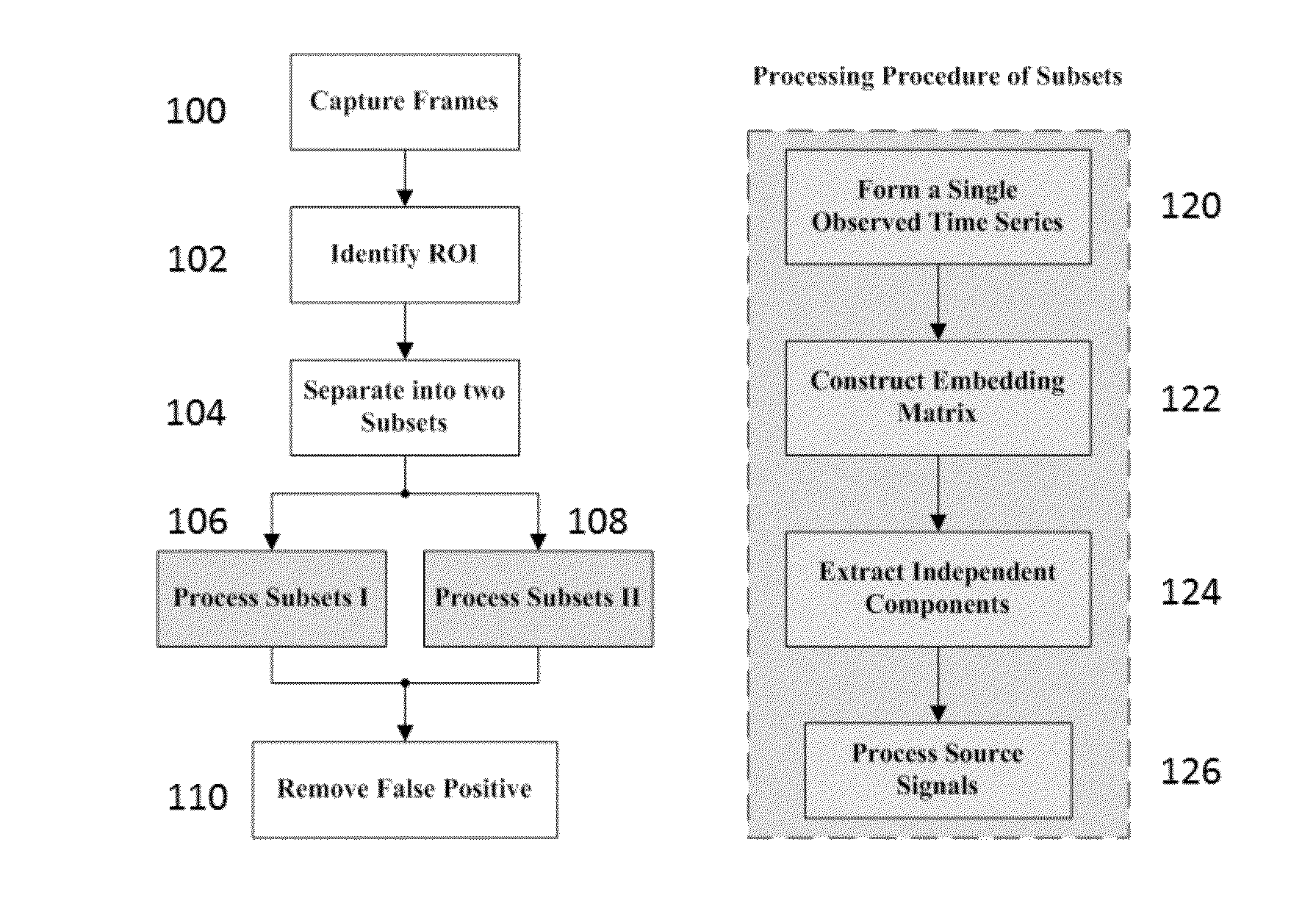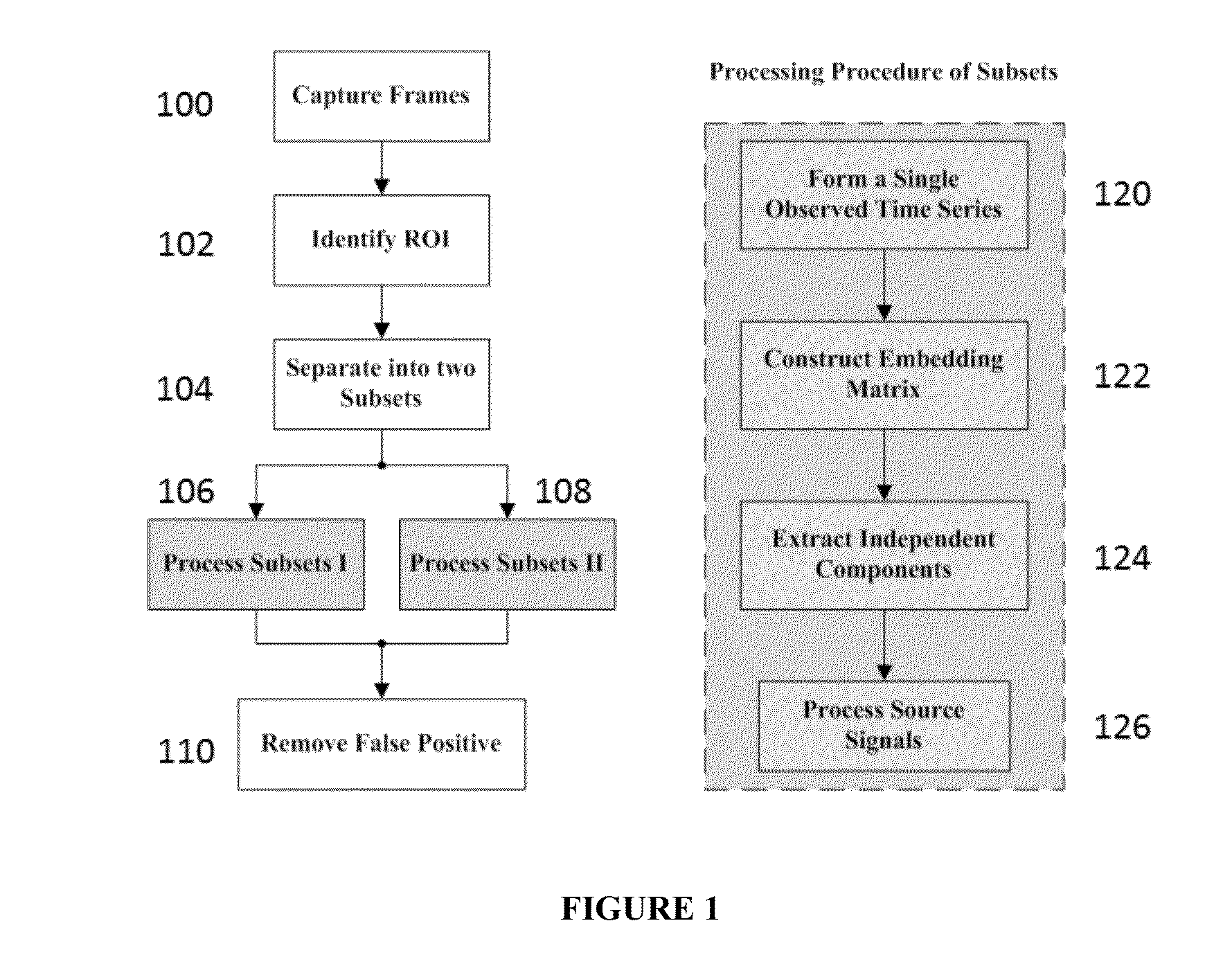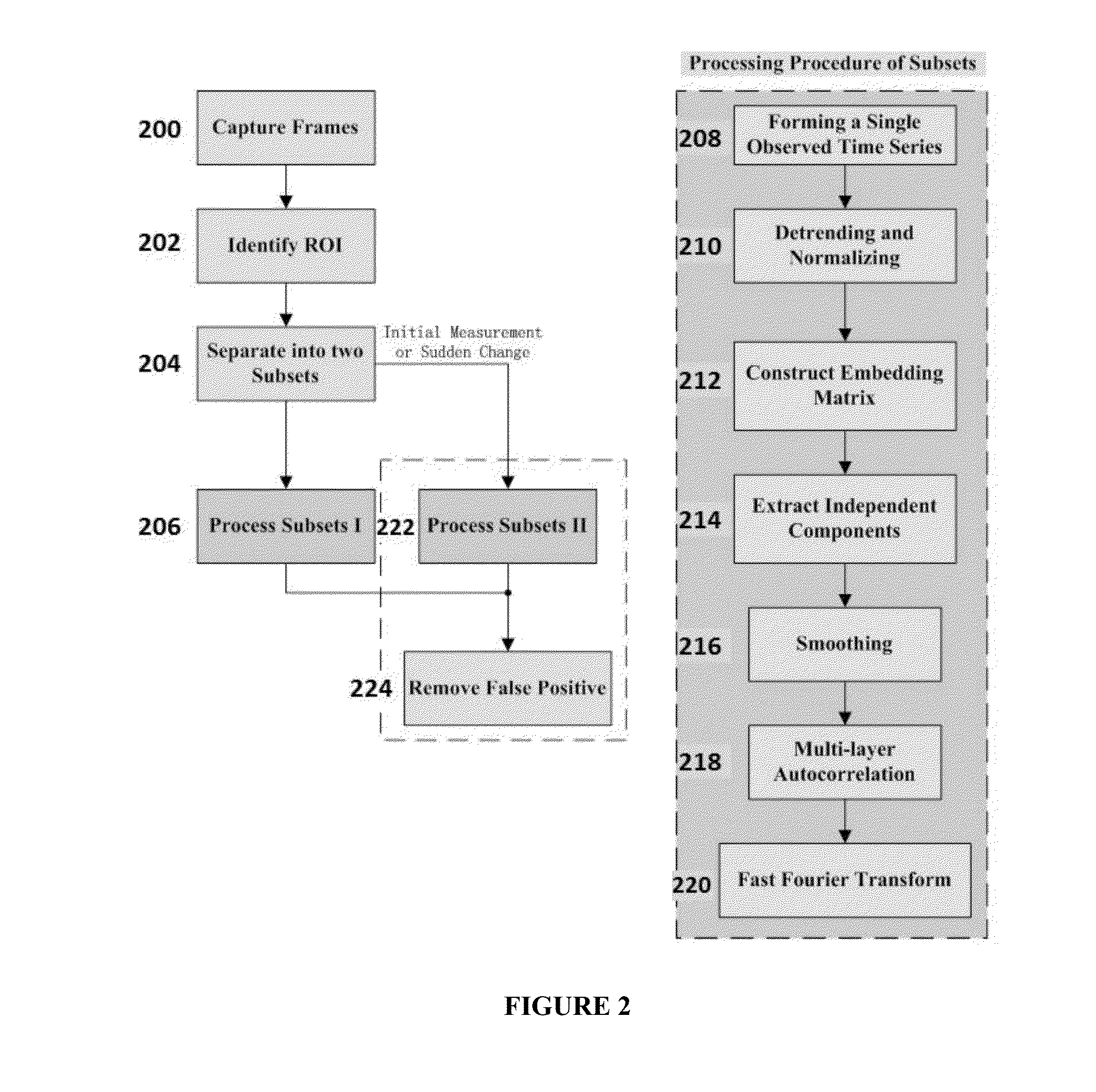Methods and systems for measuring dynamic changes in the physiological parameters of a subject
a physiological parameter and dynamic change technology, applied in the field of methods and systems for measuring dynamic changes in the physiological parameters of a subject, can solve the problems of inability to distinguish the physiological parameter(s) to be measured in a subject from the background, deficient or limited, etc., and achieve the effect of removing false positives
- Summary
- Abstract
- Description
- Claims
- Application Information
AI Technical Summary
Benefits of technology
Problems solved by technology
Method used
Image
Examples
example 1
Simultaneous Measurement of Heart Rate and Respiration Rate in both Daylight and Low-Light Conditions
[0074]Fifteen subjects (7 males, 8 females) with different skin color (Caucasians, African Americans, and Asians) between ages of 27-50 years were participated in the experiments at Georgia Health Sciences University. Indoor ambient light and a near infrared LED (830 nm) served as source of illumination for daytime and nighttime tests, respectively. Subjects were seated in front of a night vision camera (model MT9V024 available from Aptina Imaging Corporation) at a distance of approximately 1 m to restrict their upper body within the visual angle of camera.
[0075]The general strategy employed for data collection and analysis is generally described in FIG. 2. First, subjects were continuous filmed to obtain a series of images over time (step 200). Next, the images were analyzed to identify two regions of interest (ROIs) within the image series: one ROI used to determine blood volume pu...
example 2
Dynamic Measurement of Heart Rate and Eespiration Rate in a Subject
[0083]A participant first performed moderate exercise (50 push-ups), and then was seated in front of a night vision camera (model MT9V024 available from Aptina Imaging Corporation) at a distance of approximately 1 m to restrict their upper body within the visual angle of camera. The subject was continuously filmed for a period of five minutes. During image capture, the subject were instructed to face the camera, remaining seated, and breathe spontaneously. The subject was allowed to move naturally within a small range, such as looking up / down, nodding, tilting the head or making some facial expressions. During the period of image capture, electrocardiography (ECG) and respiratory signals were also collected using an OmniPlex® data acquisition system (Flexon, Inc.) at a sampling rate of 1 kHz.
[0084]Following image capture, the images were analyzed, as described in Example 1, to obtain values for heart rate and respira...
example 3
Elimination of False Positives
[0085]To assess the ability of the method described above to distinguish between live human beings and inanimate human-shaped objects, both human subjects and inanimate human-shaped figures were imaged as described above. 1000 measurements were made from the captured images, with half of the measurements being obtained from imagery of live human subjects and half of the measurements being obtained from imagery of inanimate human-shaped figures. Photographs of humans in magazines and drawings of a human face were used as fake figures.
[0086]The false positive rate was calculated as the total number of cases in which an inanimate human-shaped object was incorrectly identified as a human subject divided by the total number of inanimate human-shaped objects measured. The false negative rate was calculated as the total number of cases in which a human subject was incorrectly identified as an inanimate human-shaped object divided by the total number of human s...
PUM
 Login to View More
Login to View More Abstract
Description
Claims
Application Information
 Login to View More
Login to View More - R&D
- Intellectual Property
- Life Sciences
- Materials
- Tech Scout
- Unparalleled Data Quality
- Higher Quality Content
- 60% Fewer Hallucinations
Browse by: Latest US Patents, China's latest patents, Technical Efficacy Thesaurus, Application Domain, Technology Topic, Popular Technical Reports.
© 2025 PatSnap. All rights reserved.Legal|Privacy policy|Modern Slavery Act Transparency Statement|Sitemap|About US| Contact US: help@patsnap.com



